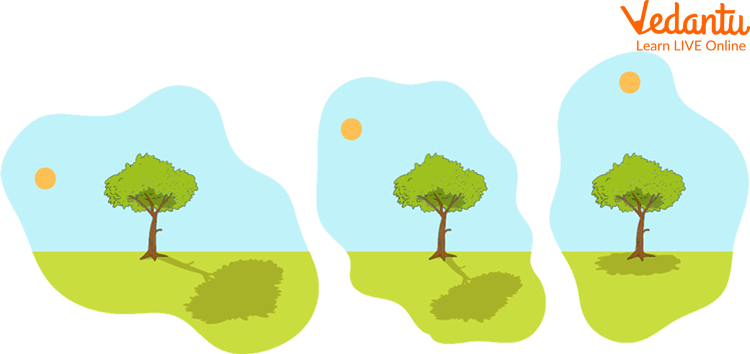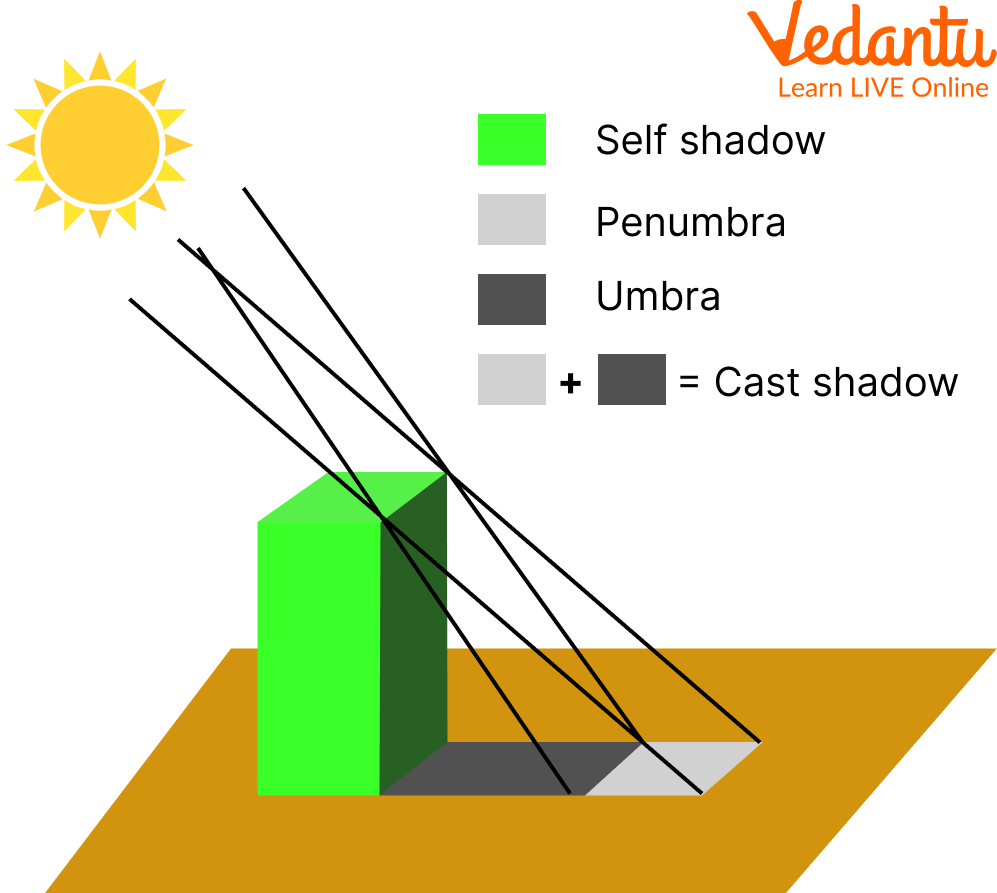




How Do Shadows Form? Understanding the Science Behind Shadows
The shadows are formed by the blockage of light by an opaque object( objects through which light does not pass). The light rays emitted from a source cannot pass through the solid surface making a shadow on the ground. The shadow's shape and size are dependent on the position of the light from the solid object. The shadow formed is very much darker than its surroundings. The shape and size of the shadow of the same object might vary. The formed shadow of an object can often be misleading. For example, an ice cream cone can form a triangle.
What is a Shadow?
Whenever we go out to play during the school recess we can always see a dark patch on the ground. That dark patch in the shape of our body is the shadow. The dark patch formed by the blockage of light by a hard surface put against a light source is known as a shadow. The blockage of light or darkness of light gives shade light and shadow formed against the light source.

Shadow
Light and Shadow
Light is the key component in the formation of shadows.
The light position, its intensity and distance from an object decide the kind of shadow that will be formed.
The light is placed very close to the object the shadow formed is very large.
Whereas, if the light is at a greater distance from the object the shadow formed is very small.
Shadow will always be formed behind the object.
Shadows are seen forming because of the sun and the light emitted from it.
The position of the sun changes throughout the day and thus the shadow length and size also change for everything on this planet.
Like early in the morning the shadows will be longer and a bit lighter in shade.
During the middle of the day when the sun is at the centre of the sky, the shadow is very small and also very dark.
And again post 2 p.m. in the afternoon the shadows begin to grow long and less dark.

Shadow of Tree
How is the Shadow Formed?
A shadow is formed by the combination of an opaque object, a source of light and a screen.
The light source emits light that falls upon a solid object, thereby casting a shadow which is basically darkness formed by the absence of light.
That shadow falls upon a surface right behind the object.

Formation of Shadow
Nature Shadow Drawing
There are always shadow patterns formed on the ground by the trees and buildings.
We need to choose an ideal spot where the shadows are very dark and distinct.
Once we find an ideal spot we can use a blank sheet of paper and place it on the ground and adjust its position to find the right image. This is called composition.
Now, we need to work fast as the scene might change as soon as the sun moves.
So we quickly trace the outline of the scene formed on the sheet of paper.
The shadow portion is said to be the positive space in the image and the rest portions are the negative space.
Now we can either shade it to our liking or use colours as well.

Nature Shadow Drawing
Some Interesting Facts
The only celestial bodies that are able to cast properly visible shadows on Earth are the Sun, Moon and at times Venus or Jupiter.
Shadows cannot be formed by any transparent object, such as glass as the light rays pass through them.
Shadow is the basic principle behind the first clock made by humans and is known as a sundial.
Summary
Shadows are dependent on light. They follow the same rules as the rules of light reflection. Shadows have been used by humans for a long time to determine a lot of things. What is shade light and shadow are discussed in the article. A very common usage of shadow is to determine time using the sundial. The intensity of light determines the darkness of the shadow which is also dependent on what time of the day it is and where is the sun positioned.
FAQs on What Are Shadows? Definition, Properties & Examples
1. What is a shadow and what three things are needed to form one?
A shadow is a dark area produced when an object blocks the path of light. To form a shadow, you need three essential components: a light source (like the Sun or a lamp), an opaque object (that does not allow light to pass), and a screen or surface (like a wall or the ground) for the shadow to be cast upon.
2. How does a shadow form based on the properties of light?
A shadow forms because light travels in straight lines. When an opaque or translucent object gets in the way, it blocks these straight paths of light. Since the light cannot go through the object, it creates a region of darkness directly behind it. This dark patch is what we see as a shadow.
3. Why does the size and position of our shadow change throughout the day?
The size and position of our shadow change because the position of the Sun (the light source) changes in the sky.
- In the morning and evening, the Sun is low, so its light hits us at an angle, creating a long shadow.
- At midday, the Sun is directly overhead, hitting us from the top and creating a very short shadow.
4. What is the main difference between a shadow and an image?
The main difference is that a shadow is just an outline formed by blocked light; it has no colour or detail. An image, such as one seen in a mirror, is a reflection of light that shows all the details of the object, including its colours, patterns, and texture. A shadow only shows the shape.
5. Can a transparent object like clear glass form a shadow?
A perfectly transparent object does not form a dark shadow because it allows almost all light to pass directly through it. Only opaque objects, which block light completely, form dark and distinct shadows. Translucent objects, which block some light, form a faint or blurry shadow.
6. What are the different parts of a shadow called?
A shadow can consist of two distinct parts, especially when the light source is large or close:
- Umbra: This is the darkest, central part of the shadow where the light source is completely blocked.
- Penumbra: This is the fainter, partial shadow that appears around the umbra where the light source is only partially blocked.
7. Why is it impossible to see a shadow in a completely dark room?
A shadow is the absence of light in an otherwise illuminated area. In a completely dark room, there is no source of light to begin with. Since there is no light to be blocked by an object, there can be no area of darkness relative to a lit area, and therefore, no shadow can be formed.
8. What is a pinhole camera and how does it relate to the concept of shadows?
A pinhole camera is a simple camera without a lens that uses a tiny aperture (a pinhole) to project an image. It works on the same core principle as shadow formation: that light travels in straight lines. The pinhole restricts light, allowing only certain rays to pass through and form an inverted image, demonstrating how blocking or guiding light can create visual effects.









